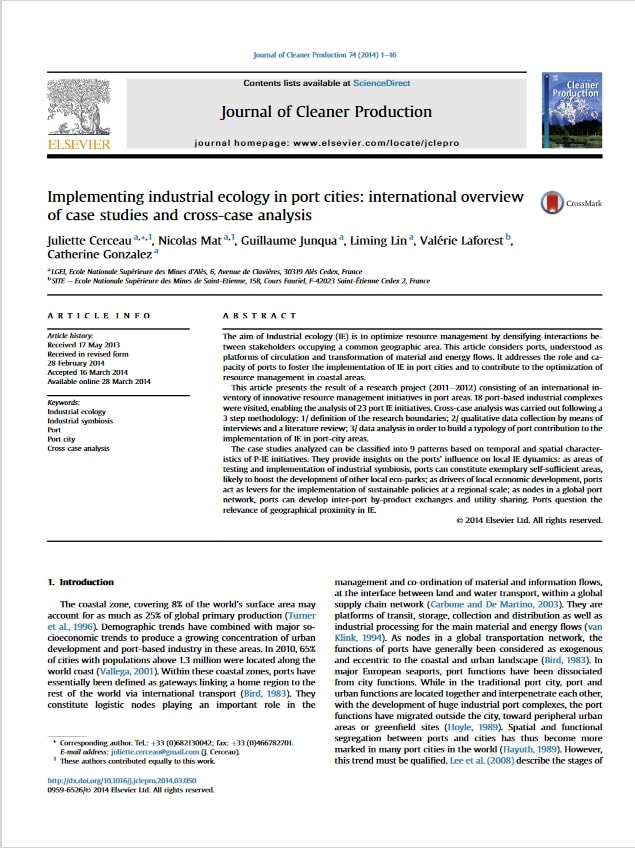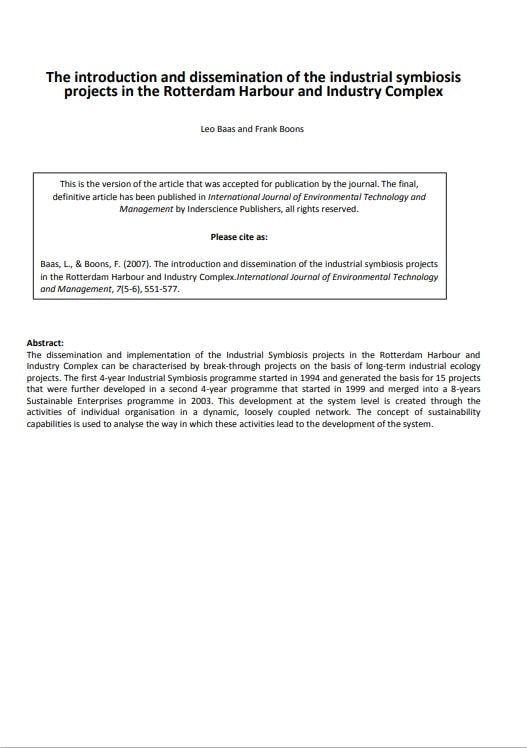Implementing industrial ecology in port cities: international overview of case studies and cross-case analysis
Abstract
The aim of Industrial ecology (IE) is to optimize resource management by densifying interactions between stakeholders occupying a common geographic area. This article considers ports, understood as platforms of circulation and transformation of material and energy flows. It addresses the role and capacity of ports to foster the implementation of IE in port cities and to contribute to the optimization of resource management in coastal areas.
This article presents the result of a research project (2011–2012) consisting of an international inventory of innovative resource management initiatives in port areas. Eighteen port-based industrial complexes were visited, enabling the analysis of 23 port IE initiatives. Cross-case analysis was carried out following a 3 step methodology: 1) definition of the research boundaries; 2) qualitative data collection by means of interviews and a literature review; 3) data analysis in order to build a typology of port contribution to the implementation of IE in port-city areas.
The case studies analyzed can be classified into 9 patterns based on temporal and spatial characteristics of port IE initiatives. They provide insights on the ports’ influence on local IE dynamics: as areas of testing and implementation of industrial symbiosis, ports can constitute exemplary self-sufficient areas, likely to boost the development of other local eco-parks; as drivers of local economic development, ports act as levers for the implementation of sustainable policies at a regional scale; as nodes in a global port network, ports can develop inter-port by-product exchanges and utility sharing. Ports question the relevance of geographical proximity in IE.

